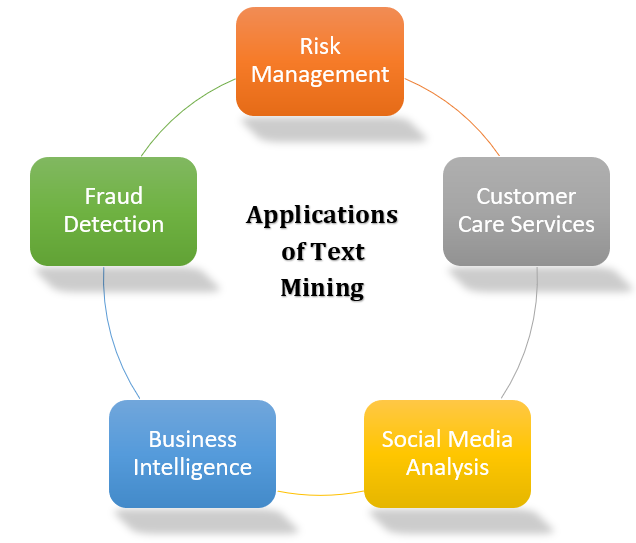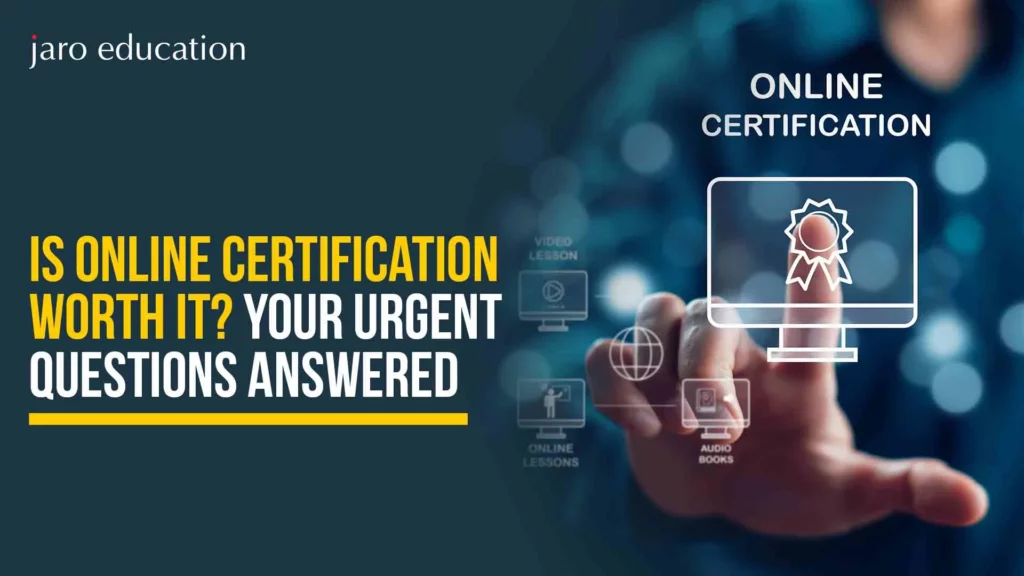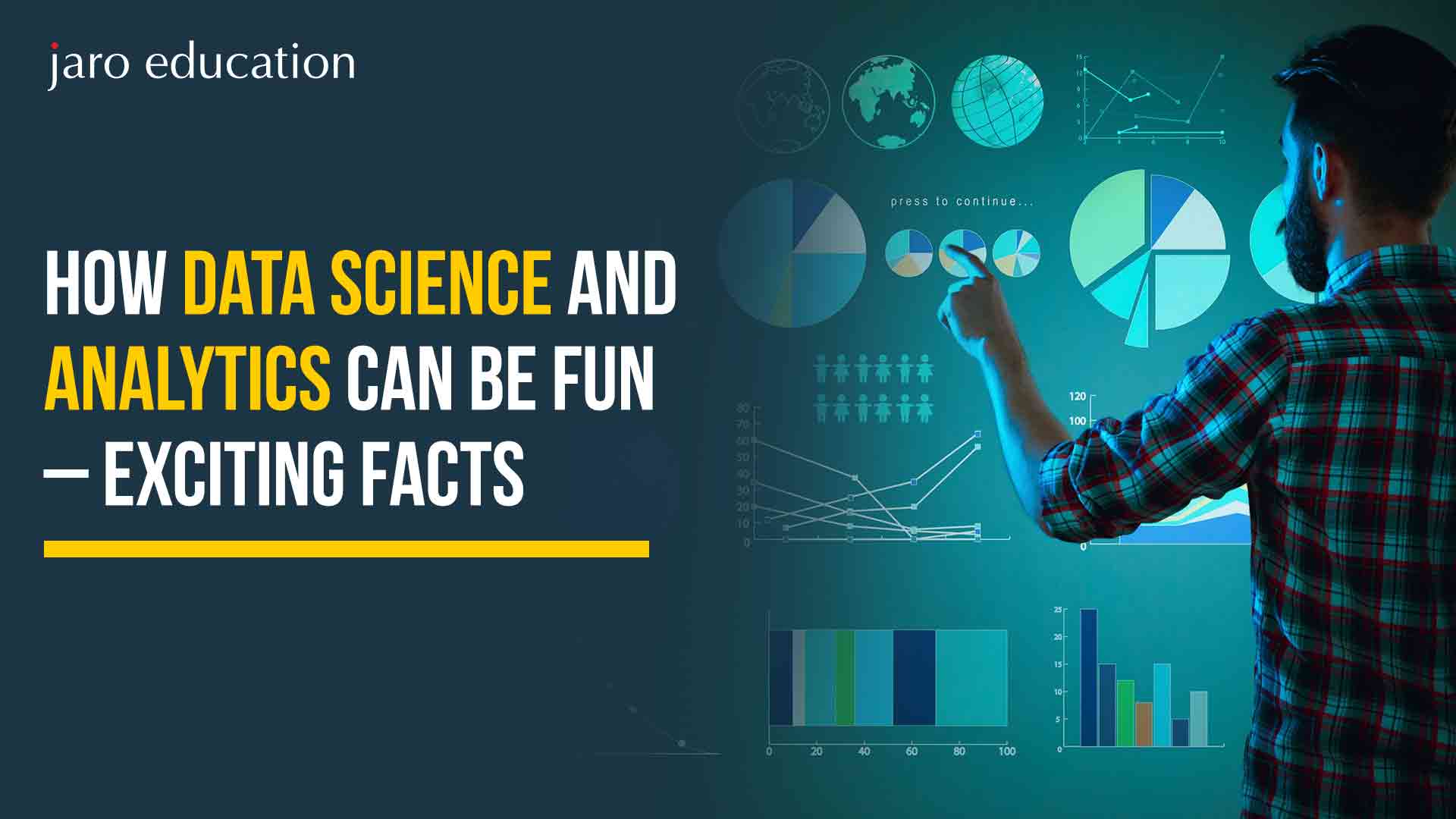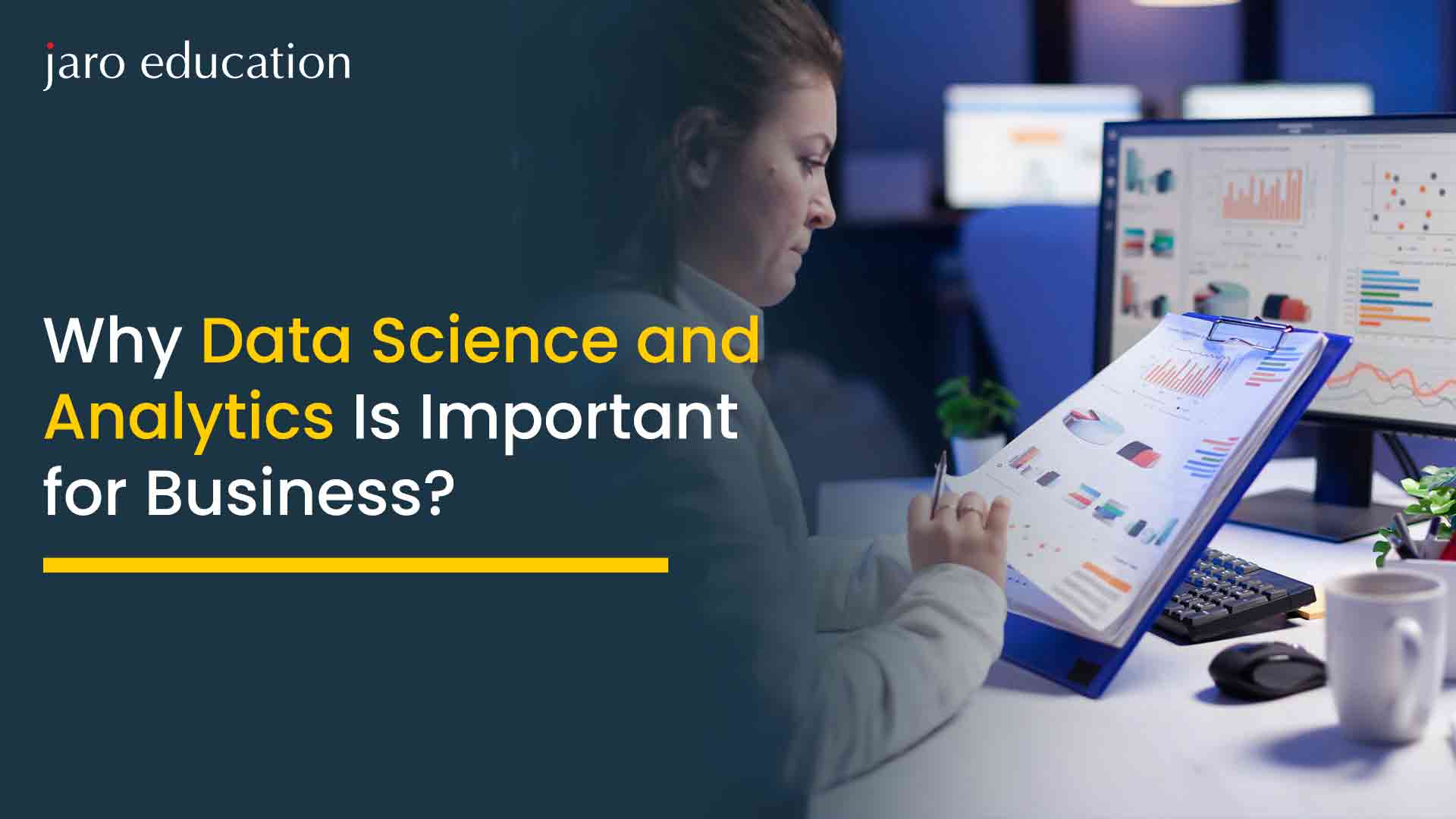Text Mining & Unstructured Data Analysis in Business
Table of Contents

- jaro education
- 27, July 2023
- 2:24 am
Organisations can access vast amounts of data in today’s data-driven business landscape. However, a significant portion of this data needs to be more structured, making it challenging to extract valuable information. This is where text mining and unstructured data analysis come into play.
A Professional Certificate Programme in Advanced Analytics & Business Intelligence at IIM Kozhikode can help you improve your analytical and Business Intelligence (BI) skills. It is intended for professionals working in business management and other related fields. The programme curriculum is intended to improve data-driven decision-making while minimising interference with professional obligations. With a modest technical and mathematical viewpoint, the emphasis will be on applying the approaches and tools of BI and advanced analytics.
Unstructured Data in Business
It refers to information that does not conform to a specific format or structure, making it challenging to analyse using traditional methods. In business, unstructured data can include text documents, emails, images, videos, social media posts, and more. While unstructured data holds valuable insights, organisations often need help to harness its potential due to the complexities involved in processing and analysing it.
Challenges and Opportunities
The challenges associated with unstructured data in business include data volume, variety, velocity, and veracity. Organisations must find ways to efficiently handle and analyse this data to gain a competitive advantage. However, with the right tools and techniques, unstructured data can present unique opportunities for innovation, improved decision-making, and enhanced customer experiences.
Definition and Concept of Text Mining
Text mining, also known as natural language processing (NLP), is extracting significant information from unstructured textual data. It involves analysing large volumes of text, identifying patterns, and deriving meaningful insights. It enables businesses to uncover hidden knowledge and make informed decisions by utilising various techniques and algorithms.
Procedures for Text Mining Analysis
Text mining analysis can be done in three simplified ways, as discussed further.
Text Summarisation
A critical procedure in text mining is text summarisation, which involves extracting the essential information and main points from a text to create a concise summary that reflects the overall content. This process allows for the efficient extraction of relevant information from large volumes of text.
Text Categorisation
Another procedure is assigning texts to predefined categories based on their content and characteristics. This categorisation helps organise and classify texts according to specific criteria or themes, making retrieving and analysing information within each category easier.
Text Clustering
Text clustering is a procedure that involves grouping or segmenting texts into clusters based on their similarities or relevance. This helps identify patterns, relationships, or themes within a large set of texts, enabling more efficient analysis and understanding of the data.
Applications of Text Mining
Here are a few of the multiple uses that text mining has across numerous sectors.

Sentiment Analysis
Sentiment analysis, or opinion mining, is a widely used text mining application that tracks customer sentiment towards a company. By mining text from online reviews, social networks, emails, call centre interactions, and other sources, sentiment analysis identifies common threads that indicate positive or negative feelings from customers. This information can be utilised to address product issues, improve customer service, and plan effective marketing campaigns.
Resume Screening
Text mining is employed in screening job candidates based on the wording and content of their resumes. Organisations can identify relevant skills, qualifications, and experiences by analysing the text, making the candidate selection process more efficient and effective.
Spam Detection
By analysing the content and characteristics of incoming emails, text mining algorithms can identify patterns and indicators of spam, allowing organisations to filter out unwanted messages.
Content Classification
Text mining facilitates the classification of website content into different categories. By analysing the text on web pages, text mining algorithms can automatically categorise and organise the content, making it easier to search for specific information or navigate the website.
Fraud Detection
The identification of possibly fraudulent insurance claims is made easier by text mining. It analyses the linguistic data in claim forms, emails, and other pertinent documents to find suspicious trends or discrepancies that might be signs of fraud.
Medical Diagnosis
In order to help in diagnosis, text mining algorithms are used to analyse reports of medical symptoms. It can extract useful information and help healthcare professionals make accurate diagnoses and treatment decisions by mining medical texts, research articles, and patient records.
Electronic Discovery
Text mining is used in examining corporate documents as part of electronic discovery processes in legal cases. By analysing large documents, it can identify relevant information, relationships, and patterns, helping legal teams gather evidence and build cases.
Chatbots and Virtual Assistants
Chatbots and virtual assistants use text mining algorithms to comprehend user questions and provide relevant answers. Natural language understanding (NLU) technology, a subtype of natural language processing (NLP), enables chatbots to accurately and pertinently respond to user enquiries by comprehending spoken and written human language.
Natural Language Generation
Natural language generation (NLG) is a related technology that utilises text mining to extract information from various data sources, such as documents and images, and then generates human-like text. NLG algorithms can be used to write descriptions for real estate listings, explain key performance indicators in business intelligence systems, and other automated content generation tasks.
Benefits of Text Mining
Text mining offers a multitude of advantages evolved the way organisations extract meaningful information from unstructured textual data. Here you will find some of the prime benefits that text mining offers.
Customer Insights
This helps identify product or business issues early on, allowing proactive measures to address them and improve the overall customer experience.
Product Enhancement
By mining text data, companies can identify desired features and improvements based on customer feedback. This information can strengthen product offerings and align them with customer preferences, increasing customer satisfaction and loyalty.
Customer Churn Prediction
This enables companies to take preventive measures to retain customers, such as targeted marketing campaigns or personalised offers, thereby reducing customer attrition and maintaining a competitive edge.
Fraud Detection and Risk Management
By analysing textual data, organisations can identify patterns and anomalies indicative of fraudulent activities or potential risks, enabling timely intervention and mitigation.
Online Advertising Optimisation
Text mining techniques can be employed to analyse online content, user behaviour, and feedback to optimise advertising strategies. By understanding customer preferences and sentiment, organisations can tailor their advertising campaigns to target specific audiences, improving campaign effectiveness and return on investment.
Web Content Management
Text mining facilitates effective web content management by automatically categorising and organising textual content. This streamlines website navigation and search capabilities, making it easier to find relevant information and enhancing the overall user experience.
Healthcare Diagnosis
In the healthcare industry, text mining holds the potential to aid in diagnosing illnesses and medical conditions. By analysing patient-reported symptoms and medical literature, text-mining algorithms can assist healthcare professionals in making accurate diagnoses and recommending appropriate treatments.
Implementing Text Mining in Business
Organisations must follow a systematic approach to implement text mining in business effectively. Let’s explore the critical steps involved in text mining.
Data Collection and Preparation
The first step in text mining is gathering relevant textual data from various sources, such as customer feedback platforms, social media, emails, and documents. Once collected, the data needs to be cleaned, preprocessed, and transformed into a suitable format for analysis.
Analysing and Interpreting Results
After preprocessing, the text data is ready for analysis. Techniques like text classification, clustering, and sentiment analysis can be applied to gain insights. Analysing the results involves identifying patterns, trends, and correlations within the data and interpreting them in the context of the business objectives.
Integration with Business Processes
The findings need to be integrated into existing business processes to derive maximum value from text mining. This integration can involve updating marketing strategies, refining customer support approaches, or improving product development based on the identified patterns.
Challenges and Ethical Considerations
While text mining offers immense potential, it also comes with challenges and ethical considerations that must be addressed.
Privacy and Data Protection
Text mining often involves analysing sensitive and personal information. Organisations must comply with data protection regulations and take appropriate measures to safeguard customer privacy.
Bias and Fairness
Text mining algorithms can be influenced by biases in the data or the algorithm design. Mitigating biases and ensuring fairness in decision-making processes that rely on text-mining results is essential.
Transparency and Accountability
As text mining becomes more prevalent, it is crucial to maintain transparency and accountability in the process. Organisations should document their text mining methodologies, disclose the data sources, and communicate the limitations and potential biases associated with the findings.
Challenges of Text Mining
Text mining poses specific challenges that can be overcome with the right approach and tools. One common challenge is the preprocessing stage, where errors can occur if the defined rules are inaccurate. Investing time and effort in setting up proper rules to ensure reliable results is essential. Another challenge arises when dealing with multilingual text.
While text mining tools are intelligent, they may need help understanding and processing multiple languages simultaneously. Separating different languages into distinct documents can help overcome this challenge and facilitate more accurate analysis. These challenges can be effectively addressed by utilising appropriate techniques and understanding text mining processes well.
Text Mining and Text Analytics: Exploring the Differences
In discussions, “text mining” and “text analytics” are often used interchangeably, but they are subtly different in meaning. Both processes involve identifying patterns and trends within unstructured data using machine learning, statistics, and linguistics techniques.
Text mining primarily involves extracting valuable insights from unstructured data. They enable identifying relationships and patterns within textual data. This involves transforming the data into a more structured format, making it amenable to further analysis.
Text analytics, on the other hand, focuses on the quantitative aspects of text data. By leveraging the structured format obtained through text mining, text analytics employs statistical and analytical methods to extract quantitative insights from the text. This can include numerical metrics, sentiment analysis, topic modelling, or other quantitative measures derived from the text.
Future Trends and Possibilities
The field of text mining is constantly evolving, and several future trends and possibilities are emerging. Some of these include:
- Advancements in deep learning models for text analysis
- Integration of text mining with other data analysis techniques like image and video processing
- Increased focus on multilingual text mining to cater to diverse global markets
- Adoption of real-time text mining to enable instant insights and decision-making
Final Thoughts
Text mining and unstructured data analysis have become indispensable tools for businesses seeking valuable insights from vast textual data. By leveraging text mining techniques, organisations can unlock hidden patterns, sentiments, and trends that drive innovation, improve decision-making, and enhance customer experiences. However, it is crucial to address challenges, consider ethical implications, and stay updated on future trends to maximise the potential of text mining in business.
Understanding text mining while having a hands-on live interaction is possible with the course on unstructured data analysis at IIM Kozhikode. You can enrol with Jaro Education and witness a unique experience that prepares you to battle all the odds that advanced analytics puts in front of you. The program brings to you a unique blend of theoretical knowledge and practical training in various data handling techniques, making you future-ready.













